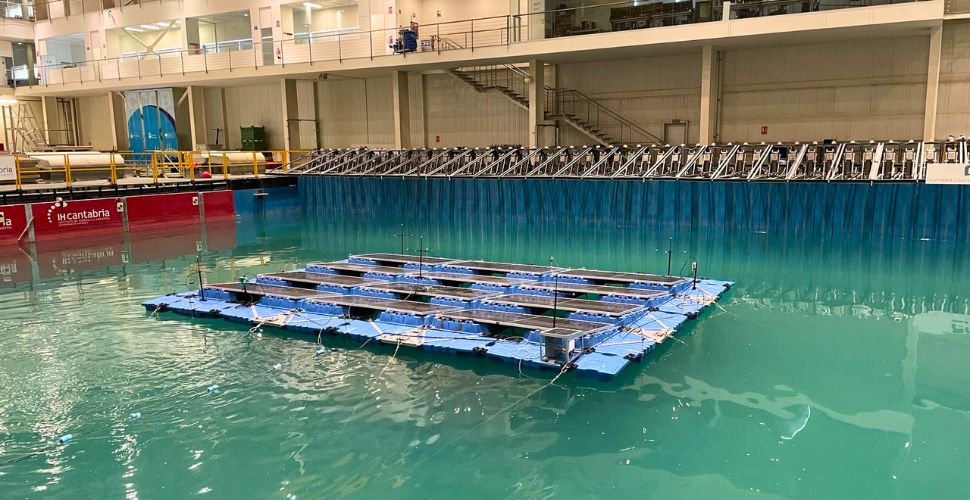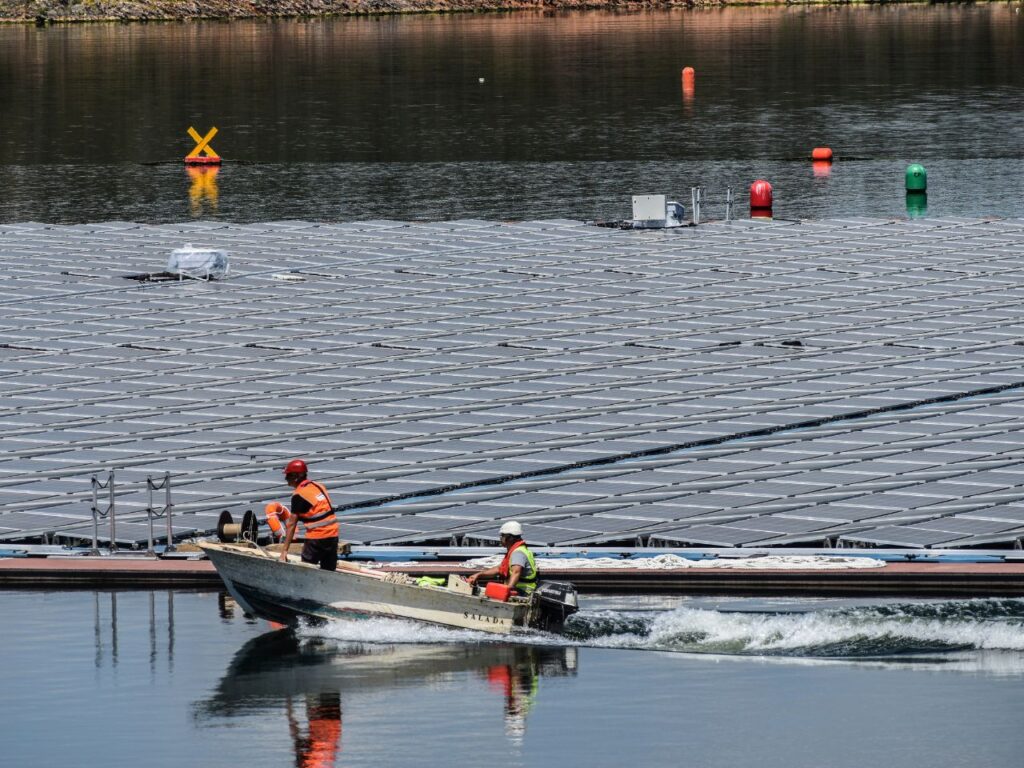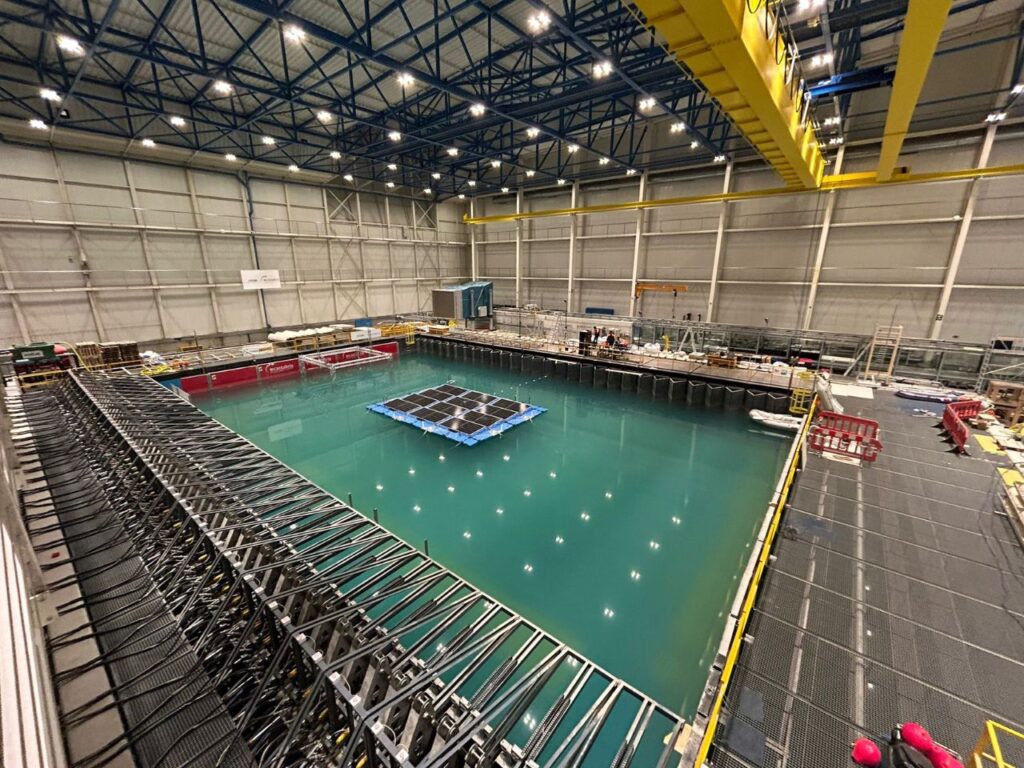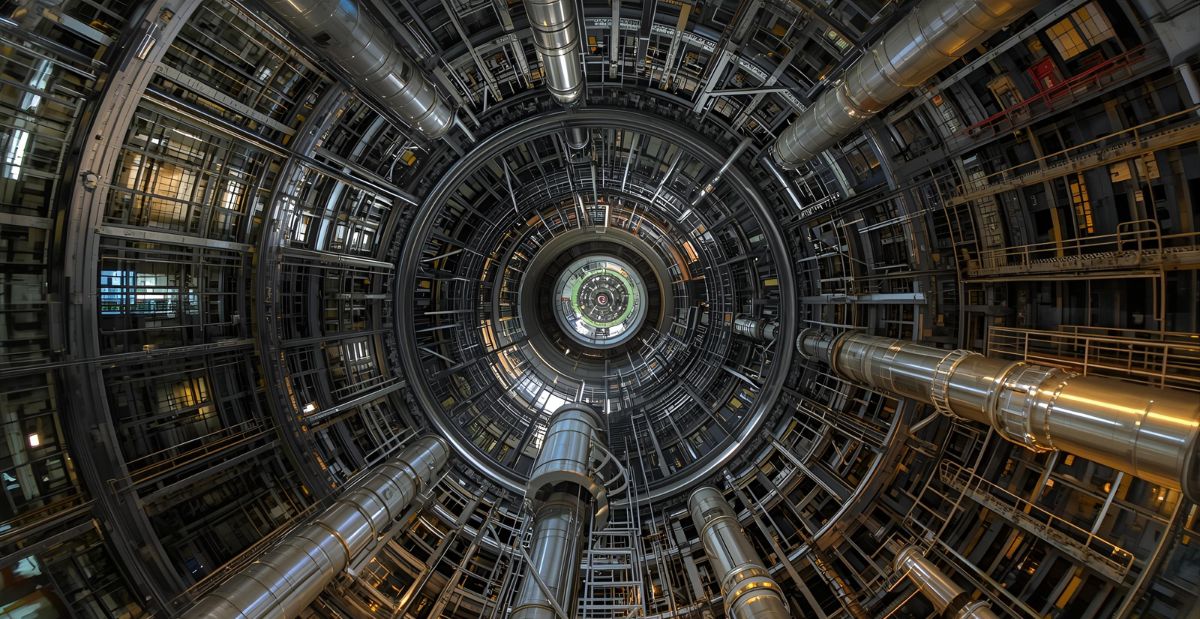
LADICIM Collaborates with Isigenere and IHCantabria to Drive New Designs and Incorporate Advanced Materials in Floating Solar Structures
The ‘SolEtAqua’ project, which also involves the University of Jaén, aims to develop new methodologies to predict the dynamic behavior of floating photovoltaic plants and make them more efficient and sustainable.
Conventional land-based photovoltaic systems, although widely used, have several limitations. They require large land areas and are subject to efficiency losses due to overheating. In contrast, floating solar plants benefit from the cooling effect of water, which significantly improves their performance. In Spain, where there are more than 1,230 large dams and over 60,000 reservoirs for irrigation, olive mill wastewater, livestock slurry, and treated wastewater, the implementation of this technology holds great potential to transform the rural energy landscape.
In a global context where climate change mitigation is a top priority—and with the European Green Deal aiming for a climate-neutral European Union by 2050—the ‘SolEtAqua’ project emerges in alignment with the goals of reducing emissions and boosting renewable energy. The challenge: to develop new methodologies for predicting the dynamic behavior of floating solar structures and improving current solutions. This involves evolving toward more efficient and sustainable designs through the use of eco-materials, thereby addressing both energy needs and environmental objectives.
The Spanish engineering firm Isigenere and the Environmental Hydraulics Institute of Cantabria (IHCantabria) are leading this initiative, joined by the Laboratory of Materials Science and Engineering (LADICIM) at the University of Cantabria and the University of Jaén.

‘SolEtAqua’ focuses on the development of advanced floating solar technologies for use in agro-industrial and livestock environments. Since December 2022, the four institutions involved in this R&D&I project have been working to optimize both the design and implementation of floating photovoltaic plants—a field in which the company Isigenere is a global pioneer. The company has developed Isifloating, a revolutionary and globally unique structure for the production of this type of renewable energy.
The project’s efforts are aimed at developing sustainable and long-lasting solutions that support the transition toward a greener, more technologically advanced agro-industrial sector.
Numerical Modeling and New Eco-Friendly Materials
The ‘SolEtAqua’ project uses numerical modeling tools to predict the dynamic behavior of floating photovoltaics under various environmental conditions, with the goal of designing structures capable of withstanding complex loads such as those caused by wind and waves.
A key focus has been placed on the development of eco-friendly materials. Researchers at LADICIM, in collaboration with project partners, have made progress in the characterization and validation of new sustainable and durable materials that can minimize environmental impact and reduce reliance on conventional plastics, such as HDPE (high-density polyethylene).

Experimental testing plays a crucial role in validating these technologies. The work plan carried out so far has enabled LADICIM to develop computational models capable of simulating the behavior of the floating structures that support the panels under adverse environmental conditions.
These models have been evaluated using experimental data generated at the Large Maritime Engineering Tank of Cantabria (GTIMC) at IHCantabria—an exceptional facility that can replicate wind, wave, and current conditions from anywhere in the world. The combination of controlled testing and real-world data allows researchers to fine-tune and improve their models and materials, ensuring that floating solar systems perform optimally.
Expected Results, Impact, and Applications
Although ‘SolEtAqua’ is still in development and scheduled for completion in December 2025, its coordinators anticipate significant outcomes that could transform the agro-industrial and livestock sectors. One key expectation is the creation of new adaptive floating concepts capable of operating and generating energy under extreme weather and water quality conditions. This durability and energy production capacity are essential for ensuring a stable and reliable power supply.
Another expected outcome is the development of sustainable materials capable of withstanding diverse aquatic environments for periods exceeding 25 to 30 years. These materials will enhance the durability of floating solar systems and help reduce the carbon footprint of the energy production process.

In addition, the project aims to achieve a significant reduction in the levelized cost of energy (LCOE), with a target of €50/MWh by 2030. This will be accomplished by optimizing the use of existing infrastructure in rural environments, thereby maximizing usability and lowering electricity production costs.
The implementation of advanced floating solar technologies in the agro-industrial and livestock sectors not only improves environmental sustainability by reducing greenhouse gas emissions, but also delivers significant economic benefits, such as lower operating and maintenance costs—enabling agro-industrial businesses to become more competitive in the market.
‘SolEtAqua’ is focused on enhancing energy efficiency and sustainability by providing practical solutions to the sector’s energy challenges. With a budget of €1.2 million, the project also has the potential to create highly qualified jobs in agriculture and livestock farming through the introduction of new technologies. The work is financially supported by the State Research Agency of the Spanish Ministry of Science, Innovation and Universities, through the 2021–2023 State Plan for Scientific, Technical and Innovation Research, funded by NextGeneration EU through Spain’s Recovery, Transformation and Resilience Plan.



